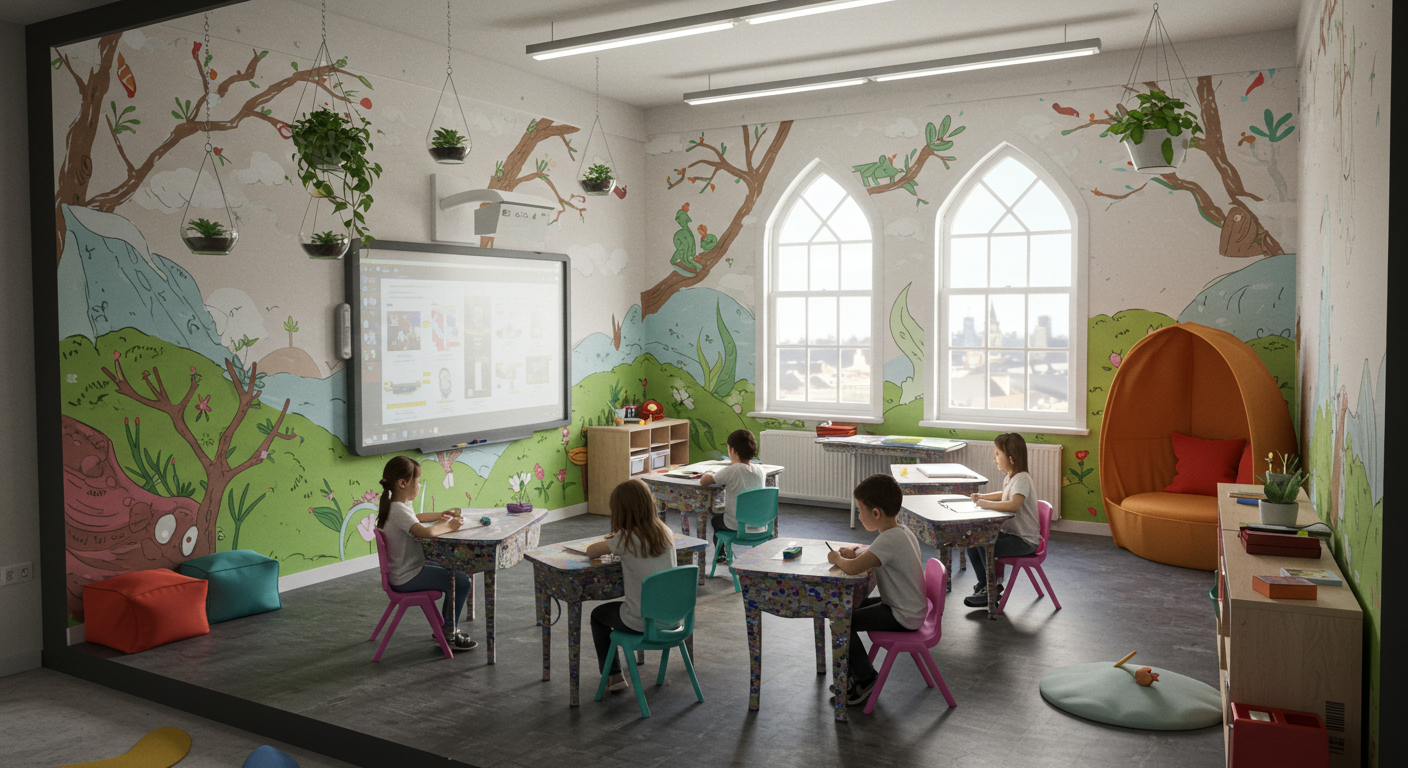Education is evolving faster than ever before, and terms like classroom 30x are becoming increasingly popular among educators, administrators, and students. The concept of classroom 30x represents innovation in teaching, learning strategies, and the use of technology to maximize productivity and engagement. Unlike traditional classrooms, this approach emphasizes adaptability, collaboration, and the integration of digital resources to create a more effective learning space.
In this article, we will explore what classroom 30x means, its benefits, applications, and how it can reshape education in the future.
What is Classroom 30x?
The term classroom can be understood as a metaphor for exponential growth and improvement in educational environments. It signifies a learning model that is thirty times more efficient, interactive, and engaging than outdated methods. Instead of focusing solely on textbooks and lectures, classroom encourages the use of technology, interactive discussions, and real-world problem-solving.
This model highlights:
-
The integration of smart tools like digital whiteboards, tablets, and AI-powered apps.
-
Student-centered learning approaches.
-
Collaborative projects that extend beyond physical classrooms.
-
Adaptability to both in-person and virtual environments.
The Core Principles of Classroom 30x
For a classroom setup to work effectively, certain principles form its foundation:
-
Technology Integration – Learning materials are digitized, and tools like VR, AR, and AI play a significant role.
-
Student Engagement – Students actively participate through interactive discussions, gamification, and project-based tasks.
-
Flexibility – Classroom allows hybrid models, enabling both in-class and online participation.
-
Data-Driven Insights – Teachers use analytics to measure progress, identify weak areas, and provide personalized feedback.
-
Collaboration – Students are encouraged to work in teams, preparing them for real-world challenges.
Benefits of Classroom 30x
Implementing classroom brings numerous advantages to both students and educators.
Enhanced Student Learning
Interactive lessons supported by technology make concepts easier to understand. Videos, 3D simulations, and real-time feedback encourage better retention.
Improved Teacher Efficiency
Teachers save time through automated grading systems, digital attendance, and AI-powered lesson planning tools. This allows them to focus on guiding students instead of administrative tasks.
Global Learning Opportunities
Classroom 30x is not bound by geography. Students can connect with peers worldwide, attend virtual seminars, and collaborate on global projects.
Personalized Education
Every student has unique learning needs. Classroom ensures adaptive content delivery, where advanced learners move ahead while others receive extra support.
Future-Ready Skills
By embracing technology and teamwork, students gain skills like critical thinking, digital literacy, and problem-solving—essential for modern careers.
Classroom 30x vs. Traditional Classrooms
To understand the significance of classroom , let’s compare it with conventional methods:
| Aspect | Traditional Classroom | Classroom 30x |
|---|---|---|
| Learning Style | Teacher-centered lectures | Student-centered, interactive |
| Use of Technology | Limited (projectors, chalkboards) | Extensive (AI, VR, smart devices) |
| Engagement Level | Passive listening | Active participation |
| Flexibility | Fixed schedule, location-based | Hybrid, flexible, global access |
| Assessment | Periodic exams | Continuous, data-driven feedback |
This comparison shows how classroom 30x transforms the educational experience into something far more engaging and effective.
Applications of Classroom 30x in Modern Education
The classroom concept can be applied in different educational settings:
In Schools
Elementary and secondary schools can use interactive lessons, gamified quizzes, and smart boards to keep younger students engaged.
In Higher Education
Universities and colleges can adopt classroom by introducing hybrid models, virtual labs, and global collaborative projects.
In Professional Training
Corporations and training institutes can use classroom to upskill employees with VR-based simulations and interactive online sessions.
Challenges in Implementing Classroom 30x
Despite its benefits, adopting classroom 30x comes with certain challenges:
-
High Costs – Investing in digital tools, smart devices, and internet connectivity can be expensive.
-
Digital Divide – Not all students have access to reliable technology, leading to inequality.
-
Teacher Training – Educators need to be trained to use new tools effectively.
-
Resistance to Change – Some institutions may prefer sticking to traditional methods.
Overcoming these challenges requires government support, institutional investment, and willingness from educators to adapt.
The Future of Classroom 30x
The classroom model is expected to grow stronger with advancements in artificial intelligence, augmented reality, and cloud-based platforms. Within the next decade, learning environments will likely become even more personalized and immersive, creating opportunities that were unimaginable in traditional classrooms.
Some predictions include:
-
AI tutors supporting teachers.
-
Fully immersive VR classrooms replicating real-world scenarios.
-
Global student collaboration without borders.
-
Data-driven systems to improve learning outcomes.
Conclusion
Classroom 30x is more than just a concept; it represents a movement toward creating smarter, more adaptable, and future-focused educational spaces. By integrating technology, encouraging collaboration, and focusing on student engagement, this model promises to make education thirty times more effective than traditional approaches.
As we move forward, the success of classroom 30x will depend on balancing innovation with accessibility, ensuring that every learner benefits from this transformative approach.

